“You look fine.” “I didn’t ask.”

On April 24, 1940, Batman #1 — one of the greatest single comic books ever — was published. It not only gave us several rip-roarin’ stories, it gave us two villains who would stand the test of time and become pop-culture titans in the own right: the Joker and Catwoman.
Both the Clown Prince of Crime and the Feline Fatale are celebrating their 80th anniversaries and DC this month planned 100-page tribute issues for each. (Click here.) Unfortunately, both have been delayed because of the coronavirus pandemic — but the calendar keeps flipping and it’s April 24, so as we have over the last couple of days, we’re going ahead with our own spotlight on these two classic characters.
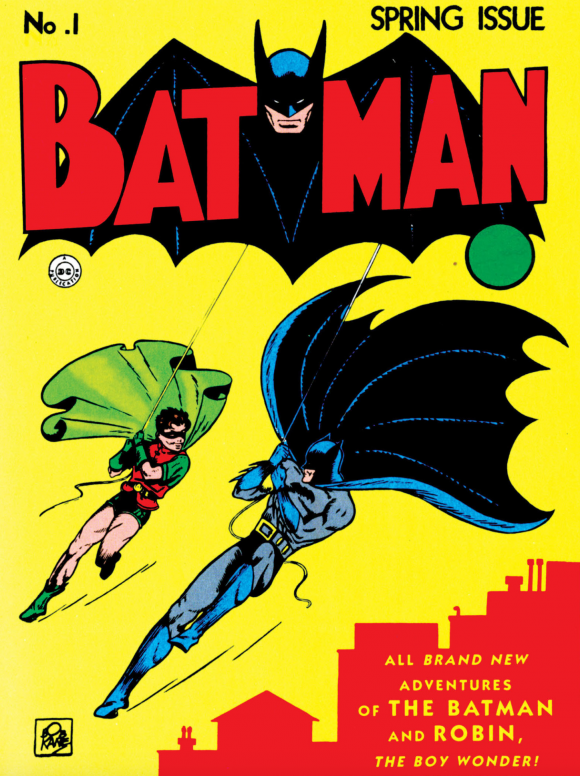
Normally, we’d do 13 COVERS, but we’ve done that for both Catwoman and the Joker plenty of times. So, instead I’ve enlisted two of our regular contributors — each of whom is a graphic designer — to give you THE TOP 13 JOKER COSTUMES EVER — RANKED and THE TOP 13 CATWOMAN COSTUMES EVER — RANKED.
You can click here to find Anthony Durso’s look at Catwoman. Here is Chris Franklin with the Joker:
—
By CHRIS FRANKLIN
The Joker has been many things: Extortionist. Enraged killer. Merry prankster. Buffoon. Psychotic entrepreneur. Evil incarnate. But through it all (or, well most of it) one thing has remained consistent: The man (mad or no) is very, very vain.
The sanctity of life may mean very little to the Joker, but personal style and image certainly do. Batman has exploited the Joker’s vanity many times over the years, in order to stop his latest scheme.
While the mention of the Joker conjures up many different things, to many different people, his visage is always a striking one. And just like Vicki Vale, he LOVES purple. So let’s look back at 80 years of sadistic sartorial style:
13. DC Special Series #27: Batman vs. the Incredible Hulk (1981). Jose Luis Garcia-Lopez (Praised Be His Name) has certainly made an indelible mark on the Harlequin of Hate, having illustrated issues of his short-lived solo title, and also the DC Style Guide used on merchandise for nearly the past 40 years. But one of his greatest gifts to the Clown Prince was his depiction of him in the Len Wein-penned DC/Marvel crossover where the Caped Crusader met the Jade Giant. The Joker appears in his traditional garb throughout, but at story’s end, given omnipotent power by the Shaper of Worlds, he declares himself “King of the World’ and materializes an outfit that is both Lord and Jester. Atop he wears a crown of gold, but with a funny stocking cap slipping underneath, and clothes that somewhat presage what his gal pal Harley Quinn would one day wear. The outfit was short-lived, but the Joker would find infinite power in other storylines, and sport similar garb.
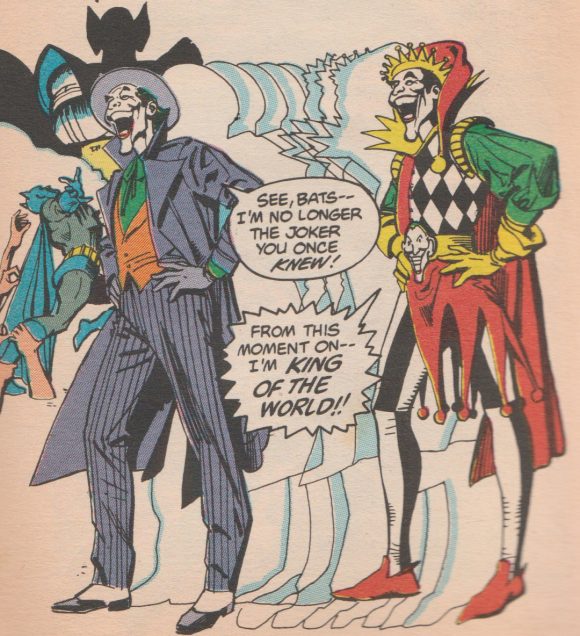
—
12. Batman: The Animated Series: Christmas With the Joker (1992). It’s easy to forget this was the first look Mark Hamill’s Joker wore on Batman: The Animated Series, aside from the Arkham prison togs he’s seen wearing in this episode’s intro. The Joker takes command of Gotham’s TV screens, and dramatically begins his holiday special leaning against a fireplace, turning to reveal a red sweater and green turtle neck, instead of his traditional orange shirt and purple jacket. Looking like a crazed Bing Crosby, Joker teases Batman and Robin with Gotham’s destruction, while celebrating the Yuletide season with his kidnapped, makeshift family, the Awful Lawfuls. This version of the Jolly Jester has even made it into merchandise in the last several years, including optional Santa hat.
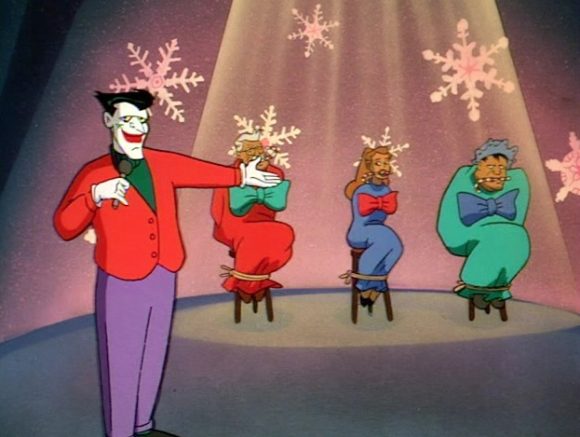
—
11. Batman Beyond: Return of the Joker (2000). You can keep your “Leatherface” Joker of the past decade (notice he’s nowhere on this list). For this author’s money, the scariest version of the Joker can be found in this direct-to-video film spin-off from Bruce Timm and company’s Batman Beyond series. In a flashback, we learn the final fate of the Joker in the present-day DC Animated Universe continuity. A deadlier-than-before Joker kidnaps and brainwashes Robin (Tim Drake), and attempts to turn him against his mentor. But the broken Boy Wonder instead kills the Jeering Jester with his own “BANG” flag. But of course, the Joker cheats death, and when he returns 50 years later, it’s no laughing matter. Bitter for his years offstage, his new look matches his changed demeanor and the edgy future he’s found himself in. Dressed in jet black (with purple rim lighting) from head to toe with his former green coiffure shaved tight, he begins a gruesome campaign to bring down Batman’s fractured dynasty.
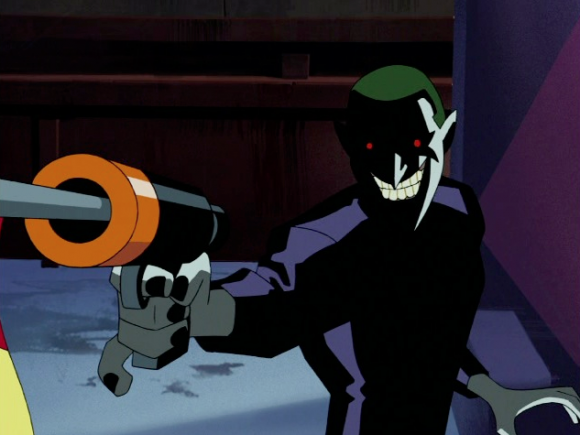
—
10. Batman: The Dark Knight Returns (1986). Frank Miller’s magnum opus, The Dark Knight Returns, reinterpreted classic characters in ways their creators would have never dreamed of. Among the most memorable was his take on the Joker. Originally shown to be a joyless catatonic, the return of Batman brings the spark back into Joker’s life. Barrel-chested like Dick Sprang’s model, he initially sports a speckled gray hounds’ tooth jacket, as he kills an entire television audience. For his final confrontation with his beloved Batman, he changes to a very smart, ’80s-centric white suit with huge shoulder pads, white tie and purple shirt that Miami Vice’s Sonny Crockett, or Talking Heads’ David Byrne would be envious of.
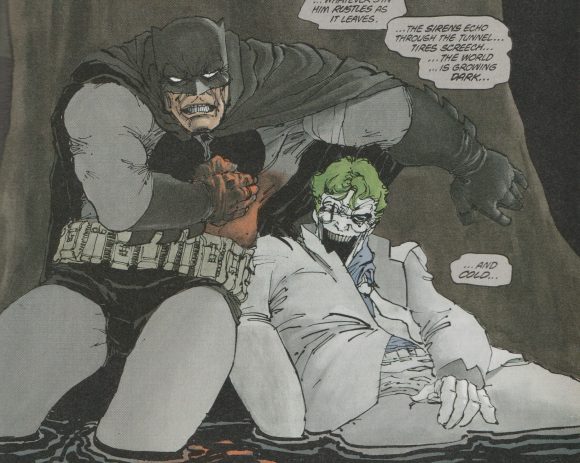
—
9. Batman: The Killing Joke (1988). Another moment that changed the Joker forever was the scene in Alan Moore and Brian Bolland’s Batman: The Killing Joke one-shot, where Barbara Gordon opened her father’s door, and was instantly met with a bullet to the spine, courtesy of the Harlequin of Hate. No longer just the lead antagonist in Batman’s rogues gallery, the Joker had now made things forever personal, permanently changing the lives of two of Batman’s closest family members. It’s all the more sadistic that the Joker is dressed in a purple flattop fedora, Hawaiian shirt and shorts — complete with camera — mimicking the look of a tourist. It all keyed around that camera, which the Joker then used to take photos of the injured and suffering Barbara. In recent times, this comic, and that action in particular, has come under some amount of scrutiny for perhaps indulging itself in the misogynistic aspects of the story. This makes it all the more curious that this look has somehow entered into pop culture beyond this comic, even showing up in the preschool-aimed Imaginext line of figures created by Fisher-Price.
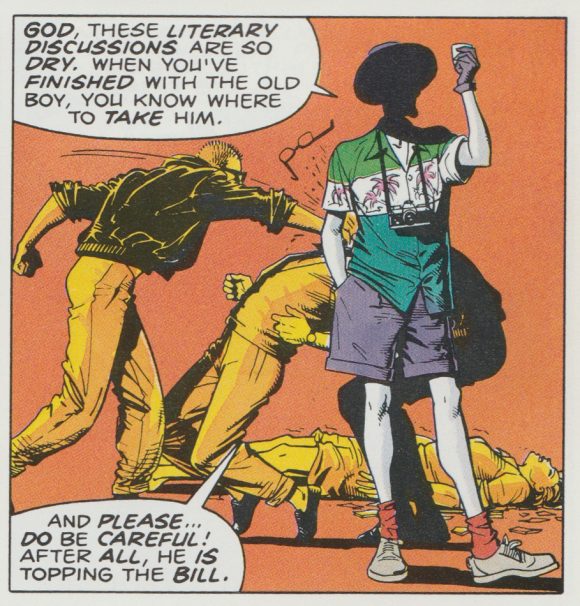
—
8. The Dark Knight Nurse’s Outfit (2008). Given some of the interpretations in recent years, Heath Ledger’s primary wardrobe as the Joker in Christopher Nolan’s The Dark Knight is surprisingly traditional, essentially a modern version of the Joker’s original look, with the addition of haunting, smeared makeup and stringy, half-heartedly dyed green hair. But perhaps the most iconoclastic look is when he barely disguises himself as a nurse, complete with titian wig, during the forced evacuation of a Gotham hospital he himself devised. He visits the bedside of the disfigured Harvey Dent, and through sheer force of will births Two-Face. He then saunters outside the building, and memorably ignites the explosives he planted, bringing the once proud structure down in a pile of nothing but rubble. The juxtaposition of the laughable image of a man of Ledger’s build in a nurse’s dress fiddling with a detonator and destroying a paragon of the civilized world is quite unsettling.
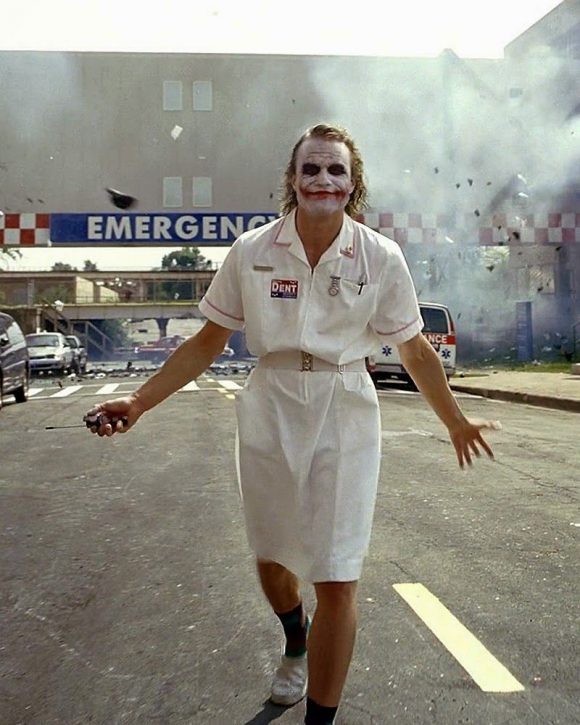
—
7. The Red Hood (1950). The Joker had style even before his forced makeover. The Man Behind the Red Hood! from Detective Comics #168, which came out at the end of 1950, revealed not only the origin of the Joker’s strange appearance, but that he had a criminal career before his chemical bath. Possibly designed by artist Lew Sayre Schwartz, the domed red helmet and cape, atop the striking black tuxedo was a powerful visual, and honestly one that could have been used on a recurring Bat-villain, independent of the Crime Clown.
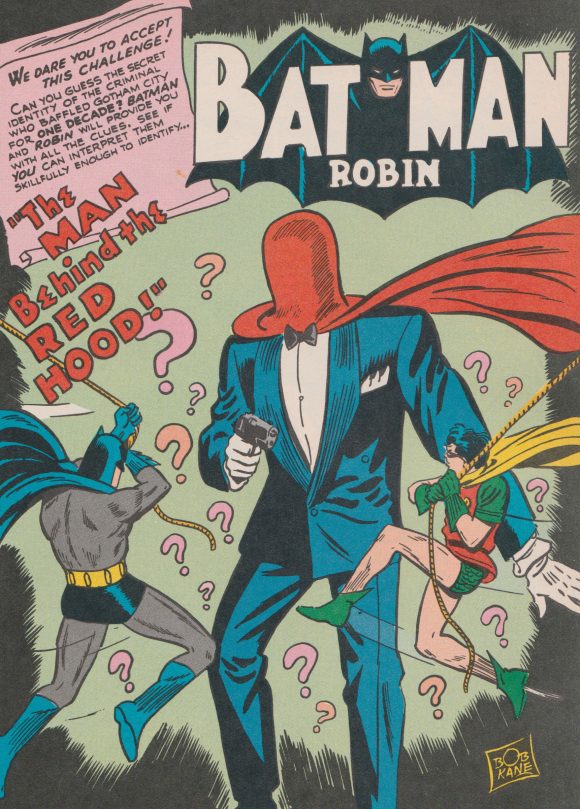
Aside from reprints and a reference in 1980’s The Untold Legend of the Batman, the Red Hood concept was mostly forgotten until it was spectacularly rendered by Brian Bolland in the above-mentioned The Killing Joke. The Joker’s unreliable narration added a tragic back story under that Red Hood, but the visual was more striking than ever before, and both the name, and the look, would now be too much for future creators to resist.
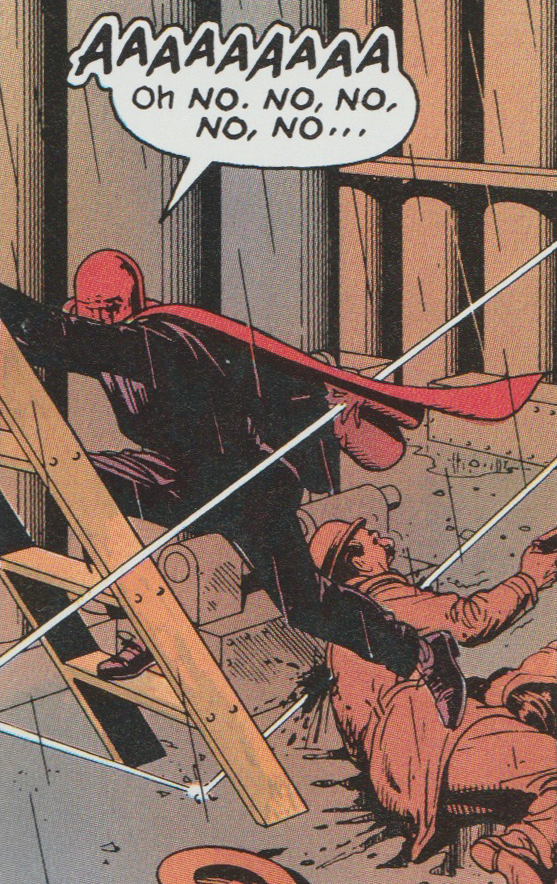
—
6. Batman #251 (1973). After being off the comic table for four solid years, editor Julius Schwartz, writer Denny O’Neil and artist Neal Adams brought the Joker back to his murderous roots with the publication of Batman #251’s epoch-making story The Joker’s Five-Way Revenge! Following O’Neil’s lead, Adams also steered the visuals into a more horrific vein, creating a moody, modernized Joker who still looked familiar, but 100 times more dangerous. He kept Infantino’s lanky frame, but updated his hair, and dropped the outdated tails and stirrups for a smart business suit, printed in a lavender grayish purple, with a green shirt and a striped tie. The Joker was reinventing himself, even if the story didn’t acknowledge a true change in his behavior, and acted as if the Clown Prince was always this homicidal. While the updated suit wouldn’t really stick, the face and character of the Joker would remain forever changed.
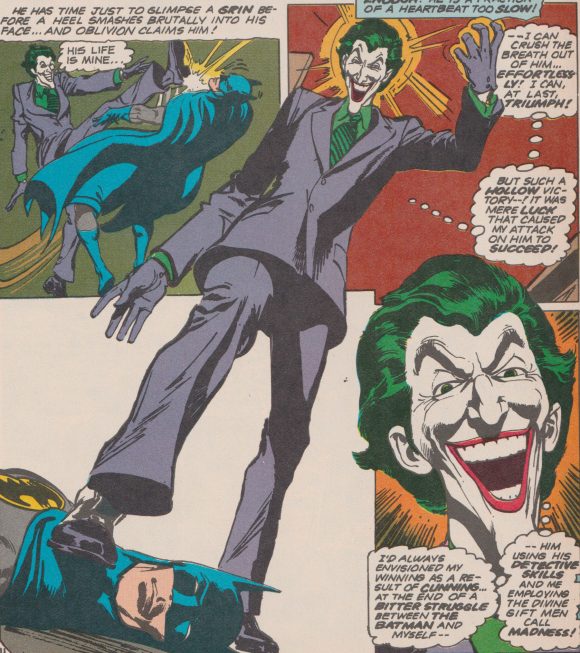
—
5. Dick Sprang’s Joker. To many fans of Batman’s Golden and Silver Ages, Dick Sprang is considered the Carl Barks of the Caped Crusader — the “Good Batman Artist.” Sprang’s distinctive takes on all of Gotham’s denizens sprung from the work of Bob Kane, Jerry Robinson and the others who preceded him, but he redrafted them in a way that made them his own. Chief among these was the Joker.
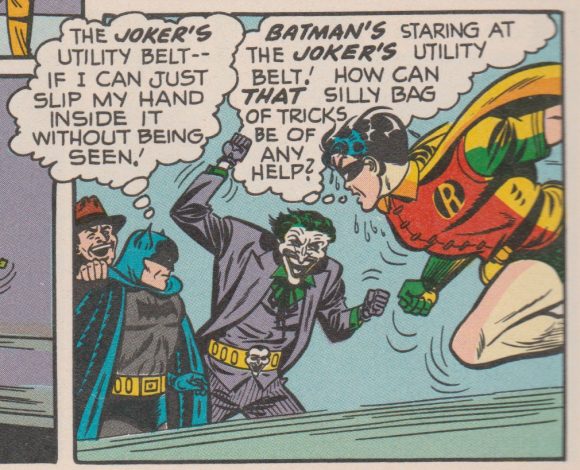
No longer simply an average man who seemed to be wearing makeup, the Joker was a grinning gargoyle with features so bizarre they couldn’t be human. Sprang gave the Joker a subtle makeover, with broader shoulders and a much longer waist coat that flowed behind him almost as dramatically as Batman’s cape. The Joker suddenly looked like jazz singer Cab Calloway!
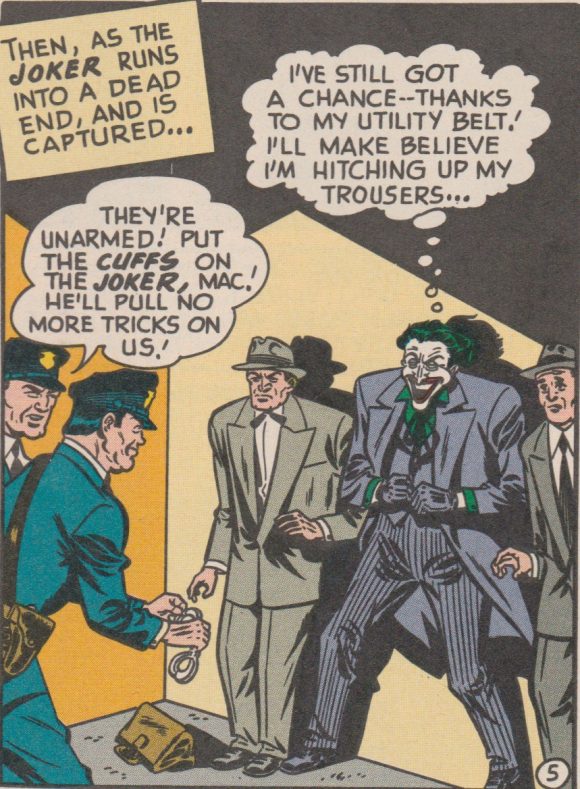
In one memorable story, Sprang accessorized his King of Knaves with The Joker’s Utility Belt! (Batman #73, 1952). That would prove influential in other media, as would Sprang’s overall Joker design — reappearing in the wonderful Legends of the Dark Knight episode of The New Batman Adventures, as well as Batman: The Brave and the Bold (interpreted by producer James Tucker) and its merchandising spin-offs.
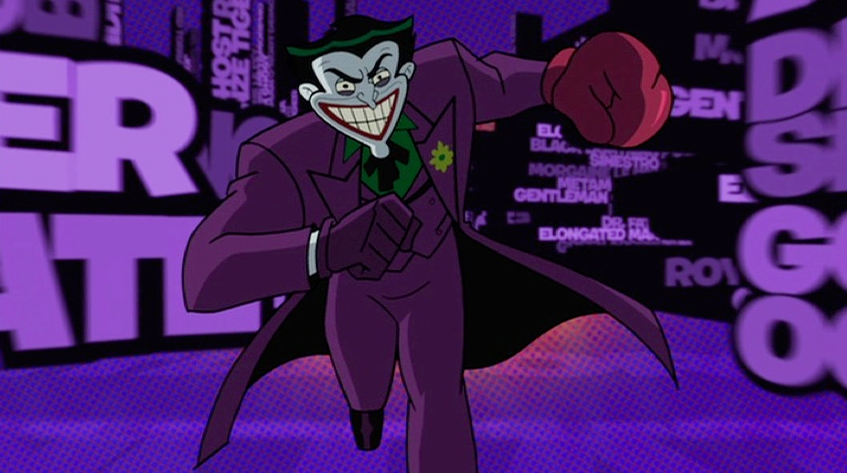
—
4. Batman (1989). Jack Nicholson’s Joker had a wide wardrobe in Tim Burton’s Batman. Most of his suits were fairly traditional and a few were not (like his mime outfit). But one in particular that stands out was the “artist’s outfit” he wears to court Vicki Vale at the Fluegelheim Museum. Clad in checkered pants, purple jacket and painter’s beret, the Harlequin of Hate makes quite an entrance to Prince’s Partyman, as he gases the patrons and defaces the priceless art. Nicholson gets perhaps his most memorable moment when Vicki splashes water on him and his tanned Caucasian makeup streaks to reveal his perma-white look beneath. His subsequent “Boo!” and sinister cackle set up the perfect moment of suspense — broken by the gosh-wow entrance of Michael Keaton’s Batman, crashing through the skylight above. His last seconds in this scene include the immortal line, “Where does he get those wonderful toys?”
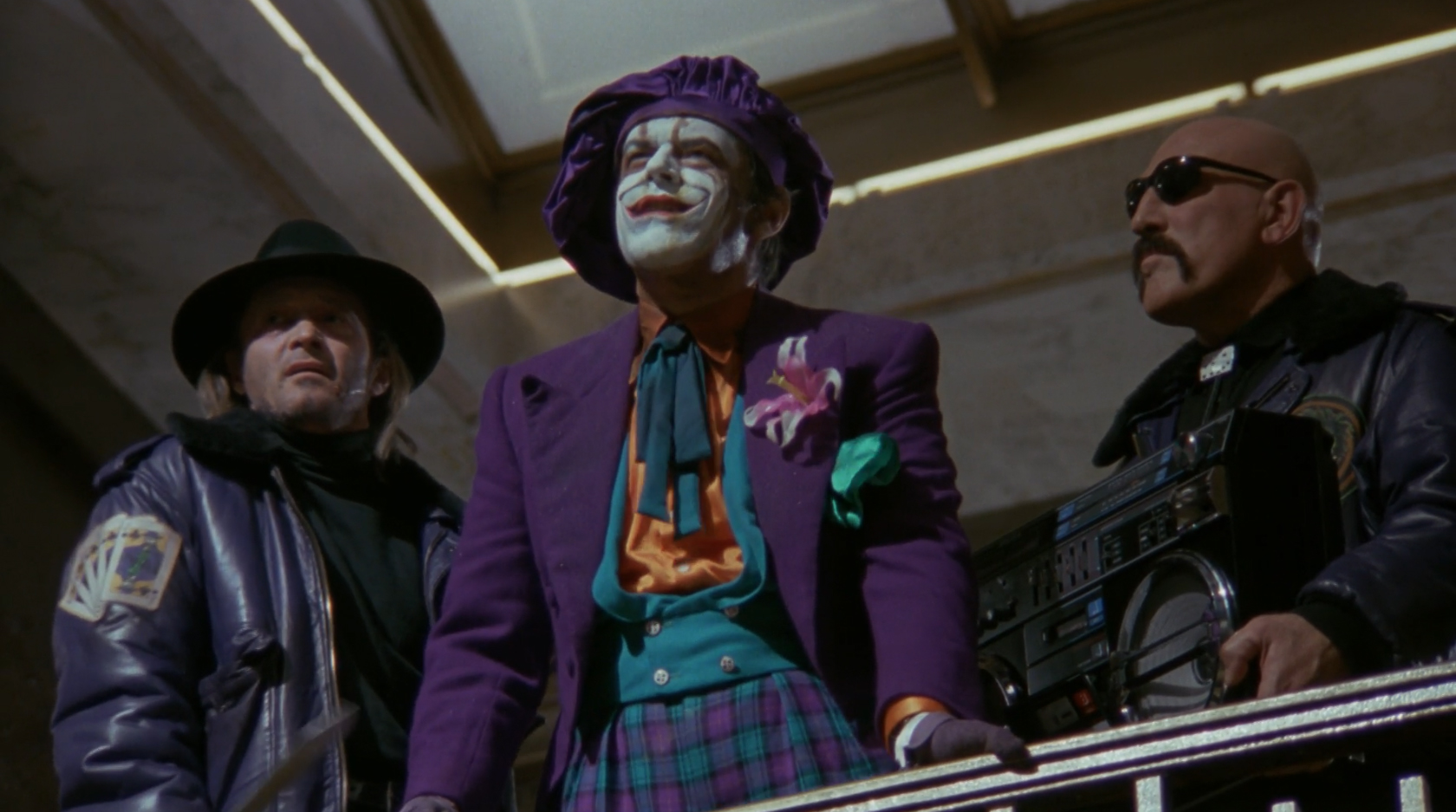
—
3. Batman ’66. Cesar Romero’s Joker is perhaps best known nowadays for his career-defining mustache caked under pounds of white make-up. But series costume designer Jan Kemp knew how to reinterpret the comic book costumes for maximum effect. Perhaps eschewing traditional purple due to having already used it as an accent color for Frank Gorshin’s Riddler, Kemp decided to go magenta instead. The striking color contrast between Romero’s yellow-green wig, dark green shirt and the pinkish-hued suit made the character pop off the screen better than any other on the spectrum-soaked series. This Joker was known to accessorize, whether it was the utility belt he sported in his debut, or the green baggies he wore over his suit in the immortal episode Surf’s Up! Joker’s Under!
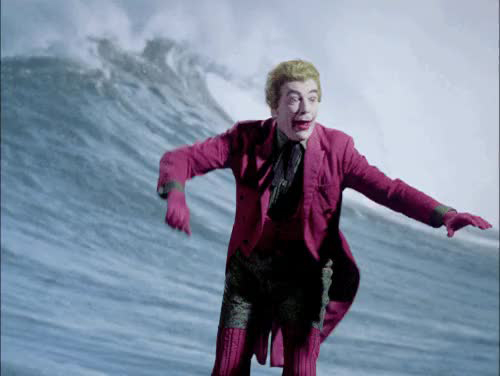
—
2. Carmine Infantino’s Joker. While this look is technically the suit the Joker wore from his inception, it was cemented in the minds of several generations by one image. Initially drawn by Carmine Infantino and Murphy Anderson for a series of mail-order posters offered in comics in the heyday of 1966’s Batmania, the portrait of the Joker — standing, legs splayed, shoulders forward, leaning on his cane — is beyond iconic. The image was used EVERYWHERE, from drinking glasses, to standees, to cookie boxes.
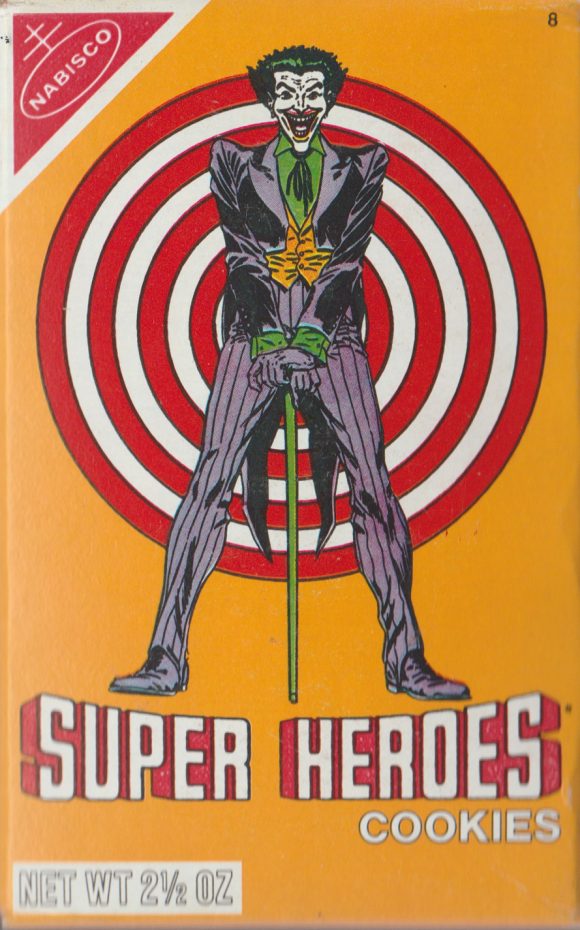
Infantino envisioned the Joker as a tall, thin man, in a very tight suit with short jacket, long tails, and fitted, striped stirrup pants. The image would be adapted in 13th Dimension editor Dan Greenfield’s beloved Adventures of Batman animated series by Filmation, dropping the pinstripes, but adding the distinctive green stripes in the Joker’s otherwise jet-black hair.
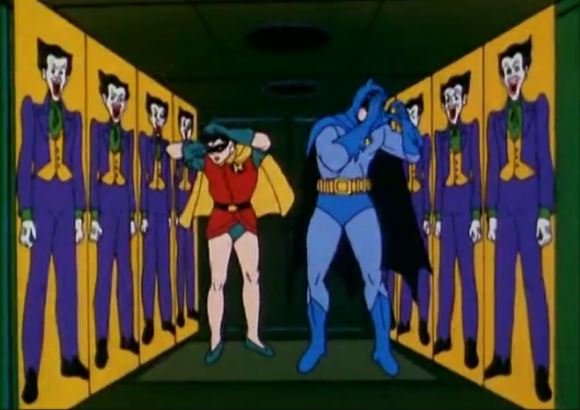
—
1. The Trench Coat and Fedora (1940-present, on and off). Debuting with the character in his first story in Batman #1, the Joker’s outer wear of purple trench coat and wide-brim fedora not only tied him to the popular look of the gangster films that influenced co-creators Bob Kane, Bill Finger and Jerry Robinson, but also the “mysterious killer” of such movies as The Cat and the Canary, and even back to The Phantom of the Opera. His face was lifted wholesale from another silent masterpiece: Conrad Veidt in The Man Who Laughs.

Kane and Robinson often illustrated the early Joker shrouded in shadow, portraying a mirthless stalker hell bent on killing the victims he announced for death over the radio. As the character softened over the years, the Joker shed his moody outer garments along with his homicidal tendencies. It wasn’t until the acclaimed Detective Comics run by Steve Englehart, Marshall Rogers and Terry Austin in 1977 that the sinister long coat and hat again became a signature look for the Joker.

In fact, the trio introduced the Joker in a long, full-body shot, removing his hat and commandingly sauntering in with his long coat. Batman: The Animated Series went for a slightly subtler look, with a gray flattop fedora and trench coat. Either way, the Joker never looks quite as mysterious, or dangerous, without his complete ensemble.
—
Chris Franklin is the co-host (along with Ryan Daly) of Batman: Knightcast, and many other shows on the Fire and Water Podcast Network, including JLUCast, which he also produces with his wife Cindy. He recently launched a video series called Those Wonderful Toys, available on the Fire and Water Podcast Network’s YouTube channel. (Click here.)
—
MORE
— THE TOP 13 CATWOMAN COSTUMES EVER — RANKED. Click here.
— The TOP 13 ROBIN COSTUMES Ever — RANKED. Click here.

April 24, 2020
Completely agree with picks #1, 2, and 3! Iconic and fashionable!
April 24, 2020
Thanks! Those three were always at the top for me.
Chris
April 24, 2020
He’s got a great fashion sense for a villain.
April 28, 2020
Boy Chris, this must have been tough to put together, with some ‘costumes’ that really stretch the definition. And Adams’ Joker doesn’t look especially more dangerous than any others, probably less, with that daft Seventies suit.
I know you American types call what we Brits refer to as a waistcoat, a vest… what you call a waist coat here, we’d call a tailcoat.
Anyway, fun piece. For me it’s Number Two all the way, it always comes back.
April 29, 2020
Well, when TV heroes like Steve Austin were wearing leisure suits, the Joker’s rather tame (and comparatively timeless) 70s suit was at least a move into the “now”, as opposed to his old fashioned tailcoat look.
I waffled between the placement 1 and 2, but as a kid, I always thought the Joker looked more cool in a trench coat (or mack, as you may call it) and a fedora.
Thanks for reading!
Chris